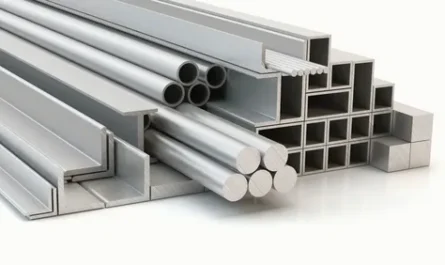Evolution of Packaging Printing
As products became mass-produced in factories during the Industrial Revolution, packaging printing evolved as well. Early commercial packaging consisted of printed paper wrappers, boxes, cartons, cans and bottles. The emergence of modern printing technologies like lithography in the late 18th century allowed for more complex, vibrant package designs at higher volumes. Through the 19th and early 20th centuries, packaging continued to develop standardized sizes, shapes and graphics to help consumers identify and select brands easily on crowded store shelves.
Advances in Printing Technology
The post-World War II era saw demand for packaged goods surge alongside population growth and urbanization. This necessitated new printing innovations like flexography and rotogravure to keep up with mass production needs. Digital technologies also began transforming the industry in the late 20th century. The arrival of desktop publishing software in the 1980s allowed designers more creative control over layouts and graphics. Today, digital and hybrid printing systems offer even greater design flexibility, personalization capabilities, and shorter run quick turnarounds compared to traditional offset lithography. Emerging technologies like inkjet and 3D printing also promise to revolutionize package design and customization possibilities in the future.
Branding Functions of Packaging Printing
Packaging Printing serves crucial branding functions beyond simply containing products. Bright, vivid graphics help products stand out on crowded retail shelves while also conveying relevant information to buyers. Package designs aim to catch consumers’ eyes and communicate a brand’s key attributes, values and target demographics via colors, text, images and other visual elements. Strategically designed packaging also reinforces brand recall and loyalty through consistent aesthetics across product lines. Furthermore, printed surfaces allow for incorporation of dynamic messages, contests, recipes or instructions to create positive customer experiences post-purchase.
Regulations and Sustainability Considerations
With packaging comprising a major portion of global plastic waste, regulators worldwide are implementing policies to curb its environmental impact. Printers must now address sustainability compliance issues including reduced plastic usage, recyclability standards and labeling demands. For example, brands are moving towards lightweighting packaging through downgauging while adopting recycled and FSC-certified paper/board options for corrugated boxes. Regulations also cover printing inks migration limits and provisions to aid recyclability like de-inking compatibility. Companies increasingly emphasize “green printing” techniques using renewable biomass inks, renewable energy-powered production and zero-VOC emission processes.
Future Growth Prospects for the Industry
Despite industry pressures from increased regulation, shifting consumer behaviors and global economic uncertainty, most experts project steady growth prospects for the packaging printing. A key driver will be continued population increase creating higher global product demand. Escalating e-commerce is also boosting packaging requirements, especially for secondary/transit packaging. Emerging Asian/African economies represent areas of high future demand as consumption patterns evolve in developing regions. Additionally, digitization enables even more customized, targeted packaging appealing to diverse demographics. If players adapt swiftly to regulations around sustainability too, packaging printing stands to cement its importance as a strategic branding and logistical tool going forward.
Customization Options with Digital Printing
The rise of digital presses widens possibilities for variable/personalized package designs and short-run production. On-demand customization lets companies version limited edition product lines, test multiple concepts rapidly or even print unique content/barcodes per package. This dynamic flexibility syncs well with e-commerce models and direct-to-consumer trends. Personalized packaging engaging individual shoppers could increase consumer excitation and discretionary spending opportunities. Even mass manufacturers find low-volume digital applications useful to localize multinational product lines with culturally relevant graphics. Digital also streamlines complex jobs like multi-SKU multipacks or shelf-ready retail-ready POP displays. However, high substrate costs and limited substrate compatibility relative to traditional methods restrict its widespread substitution of conventional printing so far.
Technical Considerations in Packaging Print Quality
High print quality remains paramount for brand protection and ability to convey intended messaging clearly. During prepress preparation, calibration ensures fonts, colors and elements meet brand standards when output across different printers, inks and substrates. The press operator must fine-tune registration, ink density and trapping to achieve solid, crisp impressions free of misaligned or muddied colors. Variable substrates like foil, matte laminates or shrink-sleeves require adjusted print settings relative to paper/board. Post-press finishing like die-cutting, gluing and overlamination should also occur cleanly without damage or distortion. Regular plate/cylinder/drum maintenance and color calibration preserves print consistency run after run on long production jobs. Quality control protocols catch defects so nonconforming packages don’t damage brands. Attention to technical quality translates directly to successful package performance on shelves versus the competition.
Role of Packaging Converters
While brand owners maintain in-house design studios, most outsource actual Packaging Printing converters. These specialized trade shops professionally manage press operations, warehousing and other production tasks more cost-efficiently than brands going it alone. Converters field orders from multiple clients at once, amortize equipment investments and access wider substrate and technology options. Their printing plants house equipment like flexographic, gravure, offset or digital printing lines alongside converting machines for processes like laminating, overwrapping or blister packaging. Converters collaborate closely with agency designers and brand managers to translate concepts into technically sound, on-specification finished packages. Their print, estimating and planning expertise ensures smooth, on-schedule order fulfillment. Some top converters also own premedia and creative divisions to offer full-service package design/engineering/production capabilities.
*Note:
1. Source: Coherent Market Insights, Public sources, Desk research
2. We have leveraged AI tools to mine information and compile it



